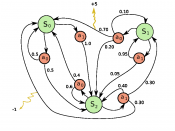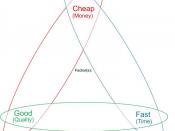Good business decisions are the core of any successful organization. Good decision-making is a balance between getting the most of what we want with as little risk as possible. It means that we include the appropriate people and use a process that encourages participation while keeping our focus clearly on the decision at hand. It allows us to make the decision with a high degree of confidence and efficiency.
We all make decisions every day. Most are somewhat simple, but many of them are critical and would produce better results with greater confidence if we had a decision-making process by which to go by. A process would also help us with recommendations that many of us are called on to make as well as improves our ability to think clearly. A company that adopts a common decision-making process improves the outcome and efficiency of all their decisions.
Some individuals, when faced with a serious decision, will make a list of the positive aspects on one side and all the negatives on the other.
However, if they are not suspending their judgment and emotions, they will usually automatically close in on the side in which they prefer and ignore the other side of the argument.
PMI is a basic decision-making tool formalized by Edward de Bono in 1992. He enhanced the pros and cons technique often used in decision-making by developing the "plus/minus/interesting" tool. It is a valuable improvement to the weighing pros and cons technique that has been used for centuries. The pros and cons technique is basically a two column list of reasons for ("pros") and against ("cons") a particular decision. The idea is that once you have listed all the pros and cons you make the decision with the most pros. PMI is similar to a pro-con list,


